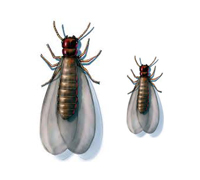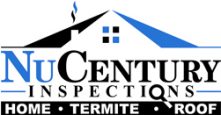Termite Inspections
Termite Inspection Company

Structural Pests (Wood-destroying Insects and organisms)
You can use these sections to highlight the features of heading. Use these paragraphs to focus on the topic you want. Make sure you keep it short and attractive.
Subterranean Termites
are very destructive. They live in the soil, building tunnels to wooden structures where they burrow into the wood seeking food. Food for a termite is any wood or material containing cellulose. Given time, they'll eat until nothing is left but a shell. Subterranean termites are often first detected when they swarm, but a professional inspection can uncover their existence and their shelter tubes.
Carpenter Ants
are some of the largest ants that you may encounter around your home. They prefer to create their colonies inside of wood and excavate the wood for nesting space. Frequently, a colony of Carpenter Ants will leave little piles of sawdust or “frass” beneath areas in which they are actively working as they expand the cavities where they will live and create channels for movement. While they do not actually consume wood as food, they can be a nuisance and eventually cause significant damage
Drywood Termites
live in wood and can be identified by the piles of fecal pellets that are pushed out of infested wood. Drywood termites live in the wood of a building and are often found in attics, door and window frames, and crawl spaces, where unprotected wood can be infested without the homeowner being aware of their presence.
Carpenter Bees
resemble bumble bees, but the upper surface of their abdomen is bare and shiny black. Bumble bees have a hairy abdomen with at least some yellow markings. Carpenter bees tunnel into wood to lay their eggs. Bare, unpainted or weathered woods are preferred. Painted or pressure treated woods are less susceptible to attack.
Wood Destroying Beetles
The three most common families of beetles in Northern California that invade and damage structural and decorative wood and furniture are the powderpost beetles (Lyctidae), deathwatch beetles (Anobiidae) and false powderpost beetles (Bostrichiade).
Dry Rot & Fungi Control
Often wood destroying fungi can cause more damage than termites in our area. Fungus growth is caused by poor ventilation, excess moisture, or water leaks (leaking sinks, toilets, showers, etc.) The "dry rot" is what is left over after the wood is consumed by the harmful fungi. It is important to have a professional termite inspection, which is actually a wood destroying organism inspection, to identify the pests and levels of structural damage which you will need to have repaired in order to protect your home.
FAQ
Serving The East Bay, Alameda & Contra Costa Counties
Fremont | Hayward | Oakland | Berkeley | El Cerrito | Lafayette | Walnut Creek | Concord | Antioch | Danville | San Ramon
Castro Valley | Richmond | Union City | Newark | Pleasant Hill | Dublin | Pleasanton | Livermore | Brentwood | Discory Bay | Surrounding Areas
